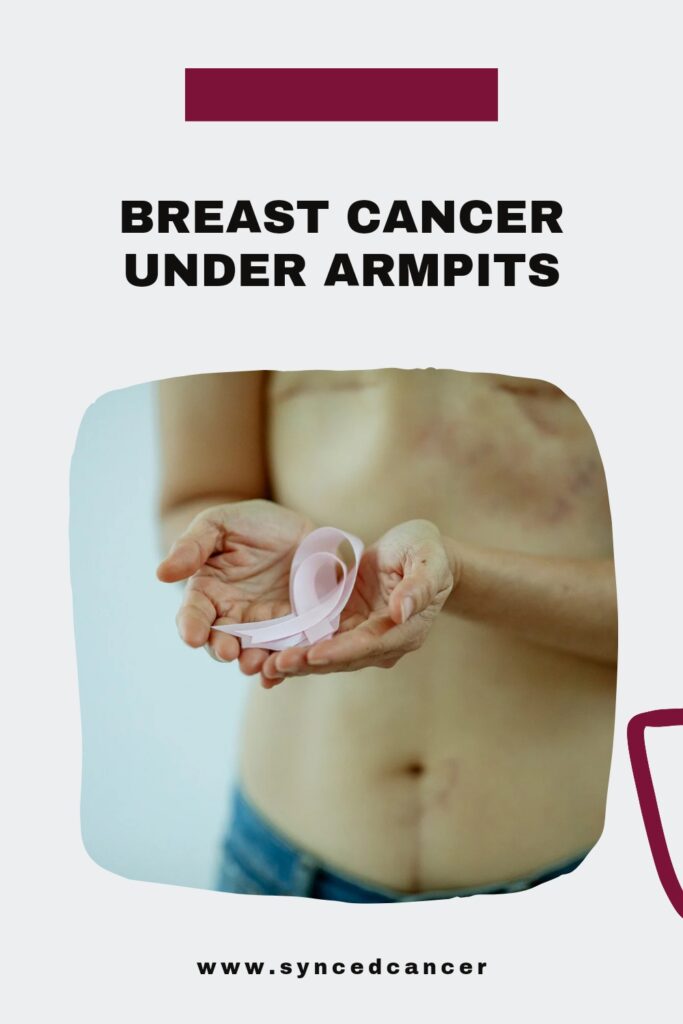Breast cancer is one of the most prevalent types of cancer that affect women globally, and it is often linked to the finding of a breast lump. However, breast cancer is still a risk even if there isn’t a lump. Some types of breast cancer don’t have the characteristic lump that many people think of when they think of the disease; instead, they develop and show up differently. For early detection and treatment, it is essential to identify these categories and comprehend their symptoms. This blog post offers a thorough understanding of kind of breast cancer without a lump, as well as warning signs and symptoms, diagnostic difficulties, and the significance of proactive healthcare and awareness.
What Is Breast Cancer Without a Lump?
Breast cancer develops when cells in the breast start to grow out of control and form tumors or malignant tissues. Not all forms of breast cancer result in such overt physical changes, although many can be recognized by palpable lumps in the breast tissue.
Breast cancer without a lump included conditions where abnormal malignant development occurs in a way that is difficult to identify by touch or even by routine mammograms. These tumors are especially difficult to diagnose because they may exhibit symptoms that resemble those of other benign illnesses or spread across the breast tissue in widespread patterns.
Paget’s Disease of the Nipple and Inflammatory Breast Cancer (IBC) are two prominent forms of breast cancer without a lump.
- Inflammatory Breast Cancer (IBC): A Unique and Aggressive Form
Inflammatory Breast Cancer is an uncommon but extremely aggressive form of breast cancer, accounting for only 1-5% of all instances of breast cancer. IBC grows quickly and spreads through the lymphatic vessels in the breast’s surface, in contrast to more prevalent types of the disease. This causes the breast to change noticeably in texture and appearance without developing an obvious bulge.
It is common for IBC symptoms to appear rapidly, sometimes within a few weeks. Among them are:
- Redness and Swelling: The breast may seem enlarged or inflamed, sometimes covering over one-third of its surface.
- Skin Texture Changes: The afflicted breast’s skin may seem pitted or dimpled, resembling an orange peel (a condition known as peau d’orange).
- Warmth or Pain: The breast may be uncomfortable or unpleasant to the touch, and it may feel abnormally warm.
- Nipple Changes: The nipple may produce an odd discharge, flatten, or retract inward.
Early detection of IBC’s symptoms is essential because it is frequently detected later due to its quick progression and lack of a visible lump.
2. Paget’s Disease of the Nipple
Another type of breast cancer without a lump is Paget’s Disease of the Nipple. This uncommon malignancy begins in the milk ducts and progresses to the areola and nipple skin. Less than 1% of incidences of breast cancer are caused by it.
Paget’s disease is frequently confused with harmless skin disorders like dermatitis or eczema. But there are distinct signs that set it apart:
- Crusty or Scaly Skin: Over time, red, scaly areas may appear on the nipple or areola.
- Itching or Tingling Sensations: These symptoms can be persistent and are not relieved by topical treatments.
- Bleeding or Discharge: A yellowish or bloody discharge may be released from the nipple.
- Structural Changes: The nipple may seem flattened or inverted.
Although it frequently coexists in the ducts with underlying breast cancer, the lack of a visible lump makes identification more difficult in the absence of thorough imaging and biopsy.

Additional Symptoms of Breast Cancer Without a Lump
While IBC and Paget’s Disease are specific types of breast cancer, other breast cancer without a lump symptom can also indicate the presence of the disease:
- Changes in Breast Size or Shape: A noticeable difference between one breast and the other, especially if it is new or unexplained, can be a warning sign.
- Dimpling or Puckering of the Skin: This can occur if cancerous tissue pulls on the breast’s internal ligaments.
- Persistent Breast Pain: Unlike the hormonal pain associated with menstrual cycles, cancer-related pain is often localized and unrelenting.
- Unusual Nipple Discharge: Discharge that is bloody, clear, or occurs without squeezing the nipple should be evaluated by a healthcare provider.
Challenges in Diagnosis
These forms of breast cancer provide particular difficulties in diagnosis and identification since they lack a lump. Many people may ignore other important symptoms because they associate breast cancer so strongly with the existence of a lump. Delays in medical consultation and treatment may result from this.
Cancers like IBC or Paget’s disease may go undetected by routine screening methods like mammograms, which are quite good at finding lumps. Instead, physical exams, biopsies, and imaging methods like MRI and ultrasound are essential for detecting these disorders.
Furthermore, a lot of symptoms of breast cancer without a lump p can be mistaken for benign illnesses like dermatitis or infections, which can cause a delayed or incorrect diagnosis.
The Value of Education and Awareness
The significance of self-examinations and routine screenings for the detection of breast cancer has long been underlined in public awareness programs. These messages, however, frequently highlight lumps while possibly ignoring other crucial signs. To guarantee more thorough education on the disease, it is imperative to expand the discussion to include breast cancer without a lump symptom.
Another important factor in increasing awareness is healthcare providers. Even if there isn’t a lump, patients should be encouraged to report any unexpected changes in their breasts. Results might be significantly impacted by early evaluation.
Conclusion
Beyond the typical lump, breast cancer is a complicated and multidimensional disease. Diseases such as Inflammatory Breast Cancer and Paget’s Disease of the Nipple serve as a reminder that we should be on the lookout for any unexpected changes in the breast in addition to lumps. To improve results and save lives, it is essential to recognize the symptoms of breast cancer without a lump, comprehend its particular difficulties, and seek prompt medical attention.
We enable people to take charge of their health by educating ourselves and others on the entire range of breast cancer symptoms. Effective treatment still relies heavily on early discovery, and raising awareness of non-lump symptoms guarantees that no indication of this disease is missed.
REFERENCES
American Cancer Society – https://www.cancer.org/cancer/types/breast-cancer/about/types-of-breast-cancer/inflammatory-breast-cancer.
Accessed 8th December, 2024










What do you think?
It is nice to know your opinion. Leave a comment.